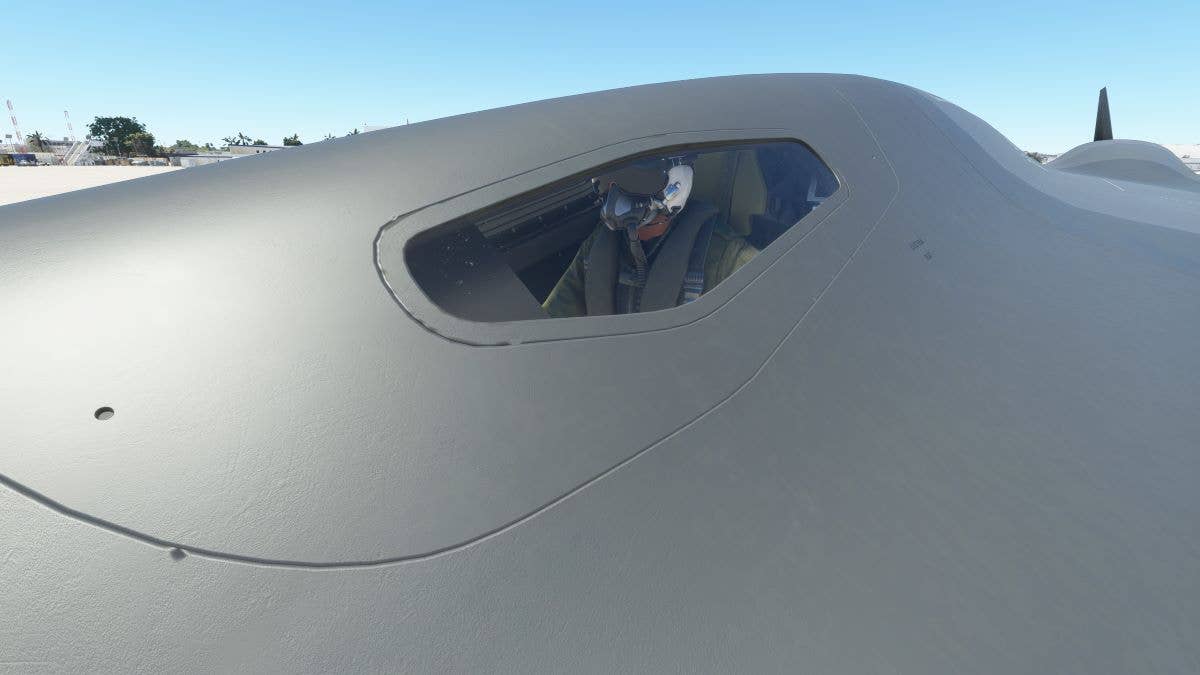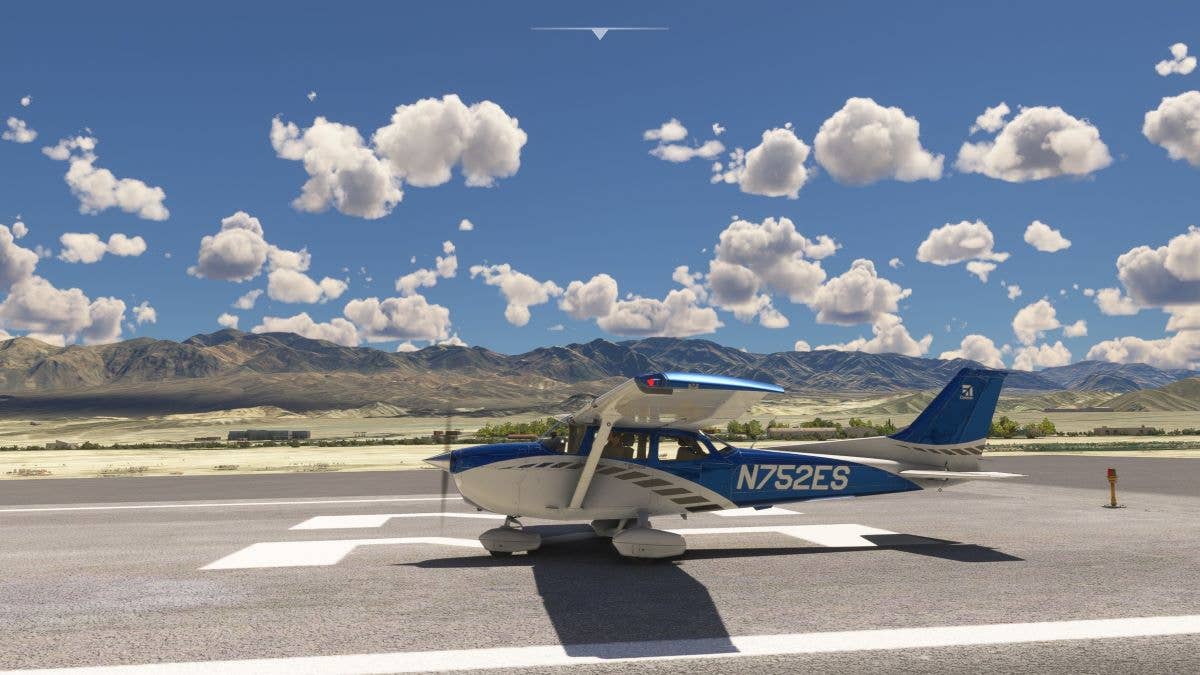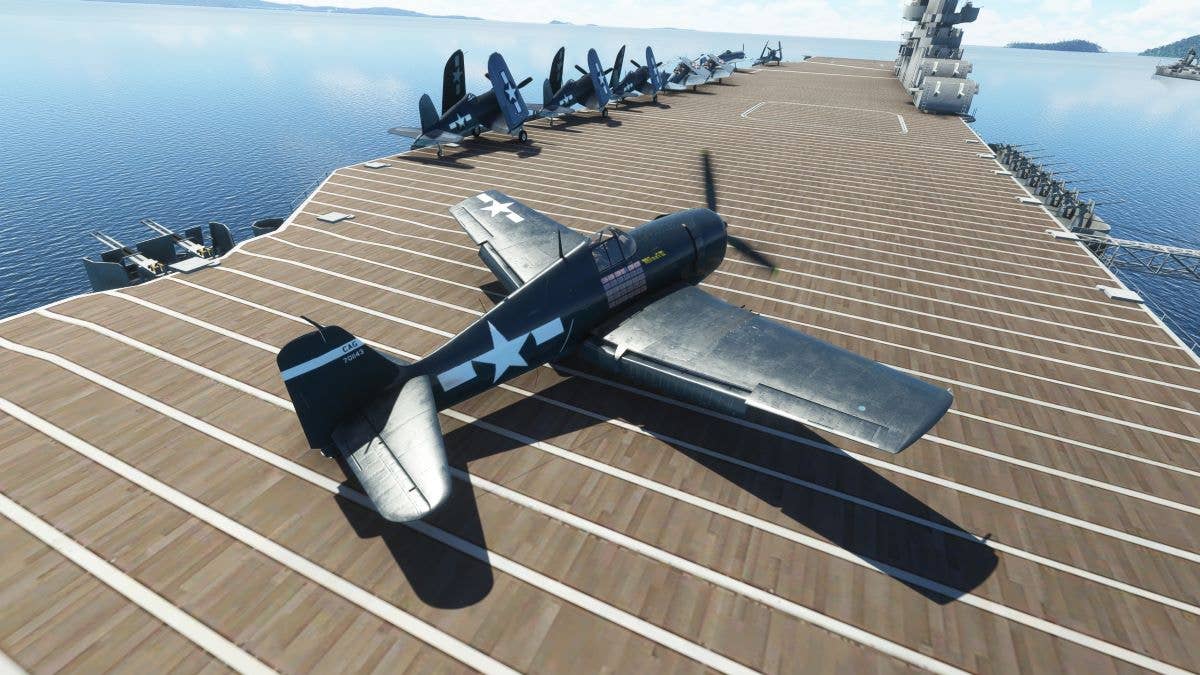Taking a Transcontinental Flight in the Hypersonic Darkstar, Virtually
Ride along on a Microsoft Flight Simulator 2020 journey in the semifictional scramjet based on the Lockheed SR-72 and flown by Tom Cruise in ‘Top Gun: Maverick.’

The scramjet in the movie “Top Gun: Maverick” was roughly based on the Lockheed SR-72, which is supposedly in development. [Image courtesy of Patrick Chovanec]
For this session in Microsoft Flight Simulator 2020 (MSFS2020), I’m going to be flying the semifictional Darkstar scramjet flown by Tom Cruise at the beginning of the 2022 film Top Gun: Maverick.
The flight I’ll be taking will be from Miramar (KNKX), the former location of the Top Gun academy outside San Diego, to Joint Base Andrews (KADW) outside of Washington, D.C. If I do everything right, the 2,000-mile trip should take just 25 minutes.
The airplane in the movie was roughly based on the Lockheed SR-72, which is supposedly in development, though all the details about it—including whether it truly exists or not—are top secret. According to reports, at least, the SR-72 is meant to be the replacement for the SR-71 Blackbird, which was retired in 1998 and was the fastest operational airplane in the world.
Lockheed’s famous “Skunk Works” actually worked with the filmmakers of Top Gun: Maverick to ensure the full-scale mock-up they constructed looked like a realistic hypersonic airplane, similar but not identical to the SR-72. There is a story—perhaps true, perhaps not— that when the filmmakers produced their version of the Darkstar, China repositioned a satellite to fly over and take a closer look, believing it was real.
Because of the wind, I’m taking off to the west and will need to turn around to head east. That will add some time to my flight. Rotating from Miramar’s runway at 180 knots, with afterburners on, I pitch up 10 degrees and raise my landing gear, accelerating toward Mach 0.9.
Once I reach Mach 0.9, I stay below the speed of sound by raising pitch to 20 degrees, while turning to the east. That’s San Diego Harbor below me.
To break the sound barrier and accelerate quickly, I invert the airplane to go into a dive. The reason I invert is to avoid excessive negative G-forces by pulling back instead of pushing forward on the stick to nose down. I’ve just broken Mach 1.0.
Now that I’m supersonic, I quickly roll back upright and resume my 10-degree climb, gradually accelerating to Mach 3.0. I’m already over the California desert, nearing the Salton Sea ahead. Until I reach Mach 3.0, I’m still using my conventional jets with afterburners.
A normal jet engine works by compressing air through a series of spinning blades then adding fuel to burn it and make it expand rapidly out the back. Before it exits, the hot air turns a turbine that powers the compressor in front. At extremely high speeds, a compressor isn’t needed because the ramming force of the oncoming air itself is sufficient to compress it. A ramjet dispenses with both the compressor and the turbine to drive it.
In a ramjet, however, the air is slowed inside the engine to below the speed of sound. In a scramjet—or supersonic ramjet—the air flowing through it remains at supersonic speed and can produce much higher speeds as a result. A scramjet, however, needs to be already moving at a very high speed to work. So once I reach Mach 3.0 (I’m at 2.81 and rising), I can flip the switch and ignite the scramjets.
The exhaust ports for my red-colored afterburners close, replaced by the white-hot heat of my scramjets. The airplane accelerates very rapidly now.
I’ve also climbed very rapidly. I level off at 135,000 feet, a little higher than I planned, but no matter. I’m nearing Mach 6.5 now, over 4,800 mph. I think I’m over Arizona, but to tell you the truth, I’m not 100 percent sure. I’m just following the magenta navigation line on my screen. You can see the nose and edges of the airplane heating up from the friction of moving so fast.
I’ve leveled off again at 127,000 feet and reached Mach 9.1, my cruising altitude. It’s possible to reach Mach 10 by going higher, but I’ve got enough on my hands already.
The flight is going very quickly. I’m already over the Great Plains. You can easily see the curvature of the Earth.
The mission of the SR-72, like the SR-71 and the U-2 before it, would be to conduct reconnaissance at an altitude too high and speed too fast for anyone to catch or shoot down. While these missions are now mostly performed by satellites orbiting the Earth—or, more experimentally, by high-altitude balloons—some argue that a high-altitude, high-speed “spy plane” is still needed to fill gaps in coverage at a moment’s notice.
I haven’t been able to recognize very much along the way, but I’m pretty sure St. Louis is about 24 miles below me.
How hot does the airplane get? That’s classified. But the skin of the SR-71, traveling at a mere Mach 3.0, reached an average of 600 degrees Fahrenheit. The cockpit window of the SR-71 was made of quartz and 1.25 inches thick to survive these temperatures.
About 200 miles from my destination, I turn off the scramjet, pull the throttle back to idle, and begin my slowdown and descent. I’m dropping through 75,000 feet here and slowing to Mach 4.4, basically just gliding down with minimal power.
The first time I flew the Darkstar, I waited too long to begin decelerating. As I descended into the thicker atmosphere, I was going too fast and the airplane broke up from the stress (oops, sorry taxpayers). This time I overcompensated in the other direction and began my deceleration a bit too early. So I ended up skimming over the Appalachians at a slower speed, adding about 15 minutes to my flight time. Better than disintegrating, I suppose.
My approach speed should be between 150 and 200 knots. To fly level at these low speeds, the Darkstar has to keep its nose pitched up about 10 degrees. As I cross the Potomac River with Washington, D.C,. in the background, just to my north, I’ve lowered my wheels for landing at Andrews Air Force Base.
This is a little tricky. I have no forward view and can barely see out my side windows. I have to rely entirely on the digital image on my screen to land on the runway. The little airplane marker on the screen shows my current trajectory. I need to keep it pointed near the start of the runway, while keeping my speed around a steady 150 knots.
It wasn’t the softest landing, but I ended up safe and sound. My total time across the country by scramjet was about 50 minutes. Taking off to the west added about 10 minutes, and beginning my slowdown and descent too early cost me another 15. Still not bad from coast to coast.
Some hope that scramjets can someday be used for passenger transport, putting any destination in the world within a 90-minute flight. But for now the applications remain purely military. Hope you enjoyed the flight.
If you’d like to see a version of this story with more historical photos and screenshots, you can check out my original post here.
This story was told utilizing the official Top Gun Maverick Expansion Pack for MSFS2020, along with airports and sceneries produced by fellow users and shared on flightsim.to for free.

Subscribe to Our Newsletter
Get the latest FLYING stories delivered directly to your inbox






